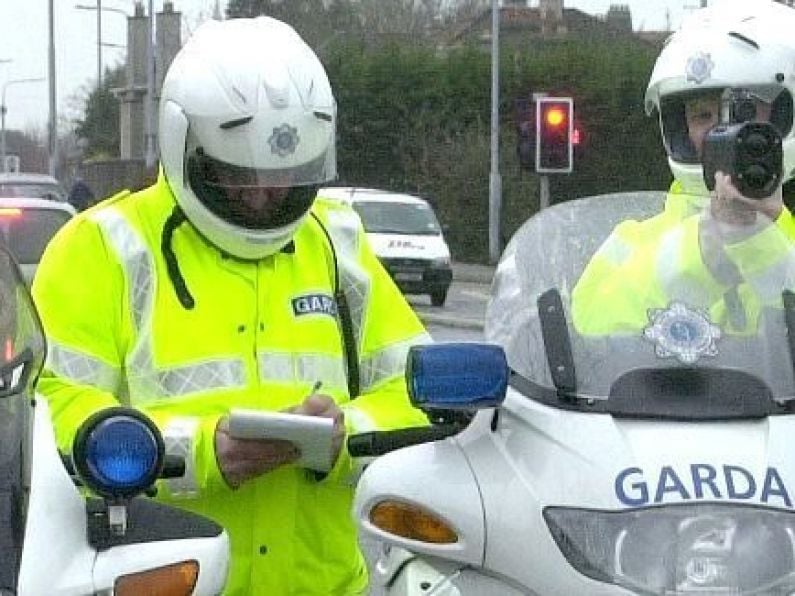By Michelle McGlynn
One driver has been caught doing 180 kilometres per hour on Dublin's M1 and another has been found doing 151km/h in a 100km/h zone on Cork's N72.
There were also notable cases in Waterford, Wexford and Kilkenny yesterday during National Slow Down Day a 24-hour Garda campaign which ended at 7am this morning.
In total, 286 vehicles were found to be speeding out of almost 205,000 checks.
Following the conclusion of National Slow Down Day, Chief Superintendent Paul Cleary, of the Roads Policing Bureau said "We would like to thank the 204,849 drivers who were found to be compliant and drove within the speed limit and would encourage all drivers to drive safely, comply with and respect speed limits".
He also thanked the Road Safety Authority (RSA), Go Safe and all of the organisations involved.
Drivers, please, think about the consequences of speeding, and every time you get behind the wheel, reduce your speed accordingly.
The 24-hour campaign is the second such operation to be held this year.
Ahead of the latest Slow Down Day, Chief Superintendent Cleary said that road deaths are "significantly higher" than this period in 2018.
"With the darker, wetter weather approaching, vulnerable road users such as pedestrians, cyclists and motorcyclists will be at higher risk over the coming months," he said.
According to An Garda Síochána, there has been an increase of 15% in detections of speeding to date in 2019 compared to 2018.
He said that it is "very disappointing" to see some drivers travelling at speeds considerably over the speed limit.
"Each time a driver chooses to drive at an excessive or inappropriate speed is potentially a serious or fatal collision."
The RSA said that excessive and inappropriate speed is a contributory factor in approximately one third of fatal road traffic collisions.
"The higher the speed, the greater the likelihood is of a collision happening and the more severe the outcome of that collision," it said.
As a general rule a 1% reduction in average speed will bring about a 4% reduction in fatal collisions, and this is why reducing motorists’ speed is essential to improving road safety.
Moyagh Murdock, Chief Executive, Road Safety Authority said: "What a driver considers small increases in their speed could be the difference between life and death for such vulnerable road users.
"A pedestrian or cyclist hit by at 60km/h will only have a 1 in 10 chance of survival, however if hit at 30km/h, 9 out of 10 will survive.
"This is especially true in vulnerable road user rich environments like towns and cities."
Below are some notable detections by An Garda Síochána over the 24-hour period of National Slow Down Day:
- 138km/h in a 80km/h Zone on the R675 Ballykinsella Waterford Waterford
- 84km/h in a 50km/h Zone on the Clontarf Road Dublin3 Dublin
- 79km/h in a 50km/h Zone on the R118 Rock Road Dublin4 Dublin
- 78km/h in a 50km/h Zone on the R448 Ballyhale Ballyhale Kilkenny
- 151km/h in a 100km/h Zone on the N72 Gort na gCros Mala Chorcaí
- 181km/h in a 120km/h Zone on the M1 Lusk Dublin
- 115km/h in a 80km/h Zone on the N14 Drumnahoagh Letterkenny Donegal
- 81km/h in a 60km/h Zone on the N11 Stillorgan Road Stillorgan Dublin
- 132km/h in a 100km/h Zone on the N11 Mt Kennedy Demesne Newtownmountkennedy Wicklow
- 131km/h in a 100km/h Zone on the N52 Durrow Demense Tullamore Offaly
- 65km/h in a 50km/h Zone on the N21 Abbeyfeale East Abbeyfeale Limerick
- 65km/h in a 50km/h Zone on the R683 Knockboy Waterford Waterford
- 64km/h in a 50km/h Zone on the R407 Castlesize Sallins Kildare
- 76km/h in a 60km/h Zone on the R527 Knock Limerick Limerick
- 63km/h in a 50km/h Zone on the Whitemill Road Wexford Wexford






